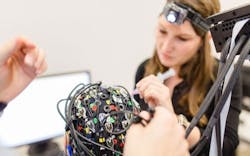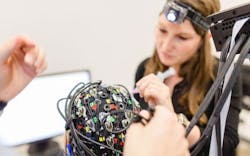Spectroscopy method to help develop motion-sensitive human-computer technologies
The Fraunhofer Institute of Industrial Engineering (IAO; Stuttgart, Germany) opened its NeuroLab test environment for researching neuro-ergonomical topics on October 27, 2015. The lab's researchers are applying neuroscience knowledge—including a spectroscopy method—to ergonomic workplace design issues, with focus on assistance systems in vehicles, in human-robot collaboration, and in knowledge work.
The newly opened NeuroLab has been built specifically to study what happens in the brain when people use technical devices. Based on these insights, the scientists plan to develop human-computer technologies that recognize users’ mental and emotional states and adapt automatically to their individual needs.
The first studies are already underway. Currently, Kathrin Pollmann and Dr. Mathias Vukelic, who are responsible for the lab's research, are investigating what happens in the human brain when they work with assistance systems. To do this, they are employing electroencephalography (EEG) and functional near-infrared spectroscopy (fNIRS). In addition to these neuroscience methods, they also record muscle activity in the face, which allows them to further identify the direction users are looking in or to detect when users screw up their eyes or smile. The scientists expect that one day, this research will lead to the development of an interface that recognizes certain brain states such as stress or pleasure, and adapts the behavior of assistance systems accordingly.
Follow us on Twitter, 'like' us on Facebook, connect with us on Google+, and join our group on LinkedIn

